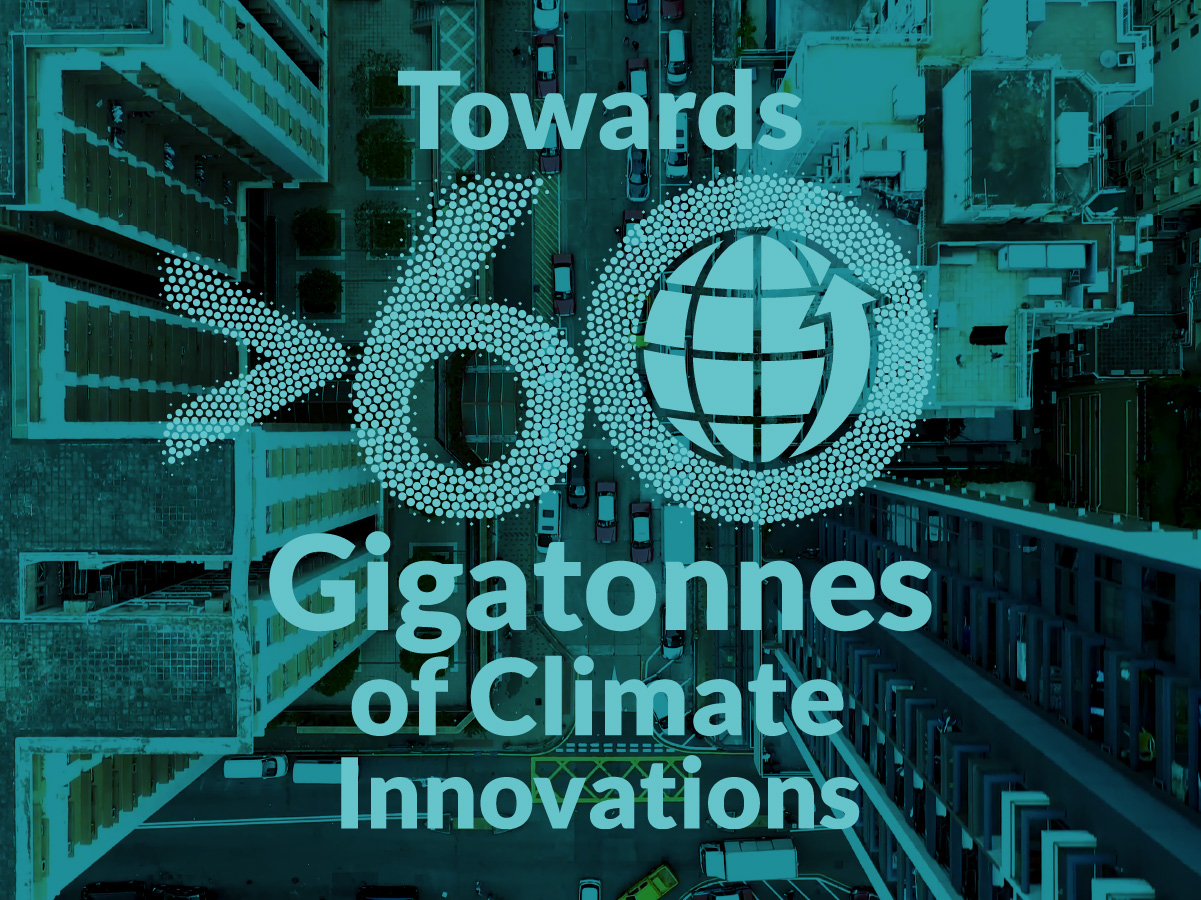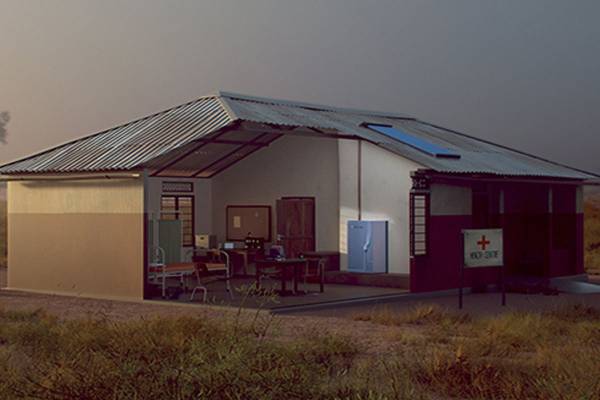Nominated innovations
1000 innovative clean energy solutions and > 150 framework enablers with the potential to deliver more than twelve gigatonnes of avoided emissions by 2030
These assessments are based on a basic avoided emission assessment. The overall concept of avoided emissions is that a solution (product or service) enables the same function to be performed with significantly less GHG emissions. The method of measuring avoided emissions, is to compare a baseline scenario without the enabling solution, with a scenario using the enabling solution; whereby the baseline represents the ‘business as usual’ (BAU) scenario.
These assessments are based on the framework document: The Avoided Emissions Framework (AEF) from September 2020

Conterra
Conterra wrote: Conterra makes the process of buying organic food easier for companies by selecting qualified organic producers for a better price that. Also have the capacity to delivery... Source: EIT Climate KIC's ClimateLaunchPad
Brazil

Conterra
Conterra
Conterra wrote: Conterra makes the process of buying organic food easier for companies by selecting qualified organic producers for a better price that. Also have the capacity to delivery... Source: EIT Climate KIC's ClimateLaunchPad
Currently unavailable

Conversion of waste plastics into liquid
PlastoFuel wrote: End of life plastics (elp) consist of plastics that cannot be easily or economically recycled. Elp is often landfilled, cauterized, extruded for cost or drained illegally. As a result of these issues, plastic pollution is obstructing our planet. Colossal plastic gyres now exist in everywhere, poisoning the surrounding and generating serious risk to human and ecosystem health. Proper management of elp can reduce litter and protect environment. Plastofuel company’s technology introduces accessible solutions by producing synthetic fuels from waste plastics. Our company’s technology allows us to reduce landfill volume. Feedstock of plastofuel company is made out of plastics with no market or commercial demand... Source: EIT Climate KIC's ClimateLaunchPad
Azerbaijan

PlastoFuel
Conversion of waste plastics into liquid
PlastoFuel wrote: End of life plastics (elp) consist of plastics that cannot be easily or economically recycled. Elp is often landfilled, cauterized, extruded for cost or drained illegally. As a result of these issues, plastic pollution is obstructing our planet. Colossal plastic gyres now exist in everywhere, poisoning the surrounding and generating serious risk to human and ecosystem health. Proper management of elp can reduce litter and protect environment. Plastofuel company’s technology introduces accessible solutions by producing synthetic fuels from waste plastics. Our company’s technology allows us to reduce landfill volume. Feedstock of plastofuel company is made out of plastics with no market or commercial demand... Source: EIT Climate KIC's ClimateLaunchPad
Currently unavailable

Conversion of wet slam to dry bio coal
C-green has developed a method for eliminating the GHG emissions related to current treatment methods for slam, where the treatment process results in a product can be used as biofuel. The process also has an effective dewatering process (70-90% to 30% in biomass) that does not require external heat to function. Any organic toxins present in the products will be burned in the combustion process and heavy metals or other uncombustiable components can be separated Furthermore, over 50% of the nitrogen in the slam can be extracted as ammonia to be used as fertilizer.
Sweden

C-green Technology AB
Conversion of wet slam to dry bio coal
C-green has developed a method for eliminating the GHG emissions related to current treatment methods for slam, where the treatment process results in a product can be used as biofuel. The process also has an effective dewatering process (70-90% to 30% in biomass) that does not require external heat to function. Any organic toxins present in the products will be burned in the combustion process and heavy metals or other uncombustiable components can be separated Furthermore, over 50% of the nitrogen in the slam can be extracted as ammonia to be used as fertilizer.
Currently unavailable

Converting agro-waste to raw materials
Beyond wrote: We want to utilise local bio-resources (mainly considered waste) & convert them to value added products in a bio-refinery type concept. The motivation behind this idea is the readily available bio (waste) resources, eg. Coconut husk, surplus rice straw, bamboo, etc. And a large growth market where the products can find place, i. E. The road construction industry. For starters, we want to create binders from our agro-waste and use it as a partial replacement for bitumen in the road construction sector. Such a process has already been proven by european research groups, who would be our eventual partners in the project... Source: EIT Climate KIC's ClimateLaunchPad
India

Beyond
Converting agro-waste to raw materials
Beyond wrote: We want to utilise local bio-resources (mainly considered waste) & convert them to value added products in a bio-refinery type concept. The motivation behind this idea is the readily available bio (waste) resources, eg. Coconut husk, surplus rice straw, bamboo, etc. And a large growth market where the products can find place, i. E. The road construction industry. For starters, we want to create binders from our agro-waste and use it as a partial replacement for bitumen in the road construction sector. Such a process has already been proven by european research groups, who would be our eventual partners in the project... Source: EIT Climate KIC's ClimateLaunchPad
Currently unavailable

Converting desert to fertile soil
Through Desert Control’s patented mixing process, Liquid NanoClay (LNC) combines clay and water and is then spread onto sandy soil. It enables the soil to retain water, turning desert into fertile soil. Production of LNC happens on site. Cultivating sandy soil into fertile land normally takes from seven to fifteen years, whereas Desert Control’s LNC accomplishes that in just hours. One application of LNC lasts a minimum of five years and only natural products are used during production, without the use of chemicals.
Norway
≈10

Desert Control
Converting desert to fertile soil
Through Desert Control’s patented mixing process, Liquid NanoClay (LNC) combines clay and water and is then spread onto sandy soil. It enables the soil to retain water, turning desert into fertile soil. Production of LNC happens on site. Cultivating sandy soil into fertile land normally takes from seven to fifteen years, whereas Desert Control’s LNC accomplishes that in just hours. One application of LNC lasts a minimum of five years and only natural products are used during production, without the use of chemicals.
≈10Mt CO2e/year

Cooking with household waste
Residential Biogas wrote: We provide apartment residents with biogas for cooking that is produced from local organic waste. An anaerobic digester that will be part of the buildings initial design will provide biogas produced of local organic matter directly to apartments in residential buildings. By using unique designated home "trash can", the system will make waste disposal easier. It will transport home organic waste directly to a smart digestion unit and will provide clean energy in the form of biogas to apartment units for cooking. The system will provide a solution for the organic fraction of the solid waste from residential buildings on the one hand and will reduce the consumption of the current cooking energy on the other hand... Source: EIT Climate KIC's ClimateLaunchPad
Israel

Residential Biogas
Cooking with household waste
Residential Biogas wrote: We provide apartment residents with biogas for cooking that is produced from local organic waste. An anaerobic digester that will be part of the buildings initial design will provide biogas produced of local organic matter directly to apartments in residential buildings. By using unique designated home "trash can", the system will make waste disposal easier. It will transport home organic waste directly to a smart digestion unit and will provide clean energy in the form of biogas to apartment units for cooking. The system will provide a solution for the organic fraction of the solid waste from residential buildings on the one hand and will reduce the consumption of the current cooking energy on the other hand... Source: EIT Climate KIC's ClimateLaunchPad
Currently unavailable

Coolar refrigerator using solar heated warm water
Coolar has produced an electricity-independent medical refrigerator. The Coolar system uses warm water that is heated through solar energy and stored in a water tank. It does not use any moving parts, hazardous cooling fluids or lubricants. Thus, the Coolar system is a cheap, durable and sustainable solution for storage of vaccines, medicines and food in regions with unreliable or expensive electricity. The Coolar system runs independently from electricity by using solar heat, which makes it almost carbon neutral. Such a refrigerator can enable doctors and health professionals to preserve lifesaving medicine and vaccines in a reliable and eco-friendly way.
Germany
≈1

Coolar
Coolar refrigerator using solar heated warm water
Coolar has produced an electricity-independent medical refrigerator. The Coolar system uses warm water that is heated through solar energy and stored in a water tank. It does not use any moving parts, hazardous cooling fluids or lubricants. Thus, the Coolar system is a cheap, durable and sustainable solution for storage of vaccines, medicines and food in regions with unreliable or expensive electricity. The Coolar system runs independently from electricity by using solar heat, which makes it almost carbon neutral. Such a refrigerator can enable doctors and health professionals to preserve lifesaving medicine and vaccines in a reliable and eco-friendly way.
≈1Mt CO2e/year

Copernicus aquaponic
Copernicus aquaponic wrote: Copernicus aquaponic’s revolutionary system is future-proofing agriculture and addressing climate change. We sell new generation aquaponic systems to farmers who want to be ready for climate change. Our scalable systems are perfect for an urban environment or traditional farmers. We turn food waste into organic fish, fruit and vegetables. The by-product compost is used to regenerate soil and the surrounding ecosystem. Our tech allows us to produce more, locally, at low cost, using less water and energy than "standard" aquaponics and without the use of any petrochemicals... Source: EIT Climate KIC's ClimateLaunchPad
Australia

Copernicus aquaponic
Copernicus aquaponic
Copernicus aquaponic wrote: Copernicus aquaponic’s revolutionary system is future-proofing agriculture and addressing climate change. We sell new generation aquaponic systems to farmers who want to be ready for climate change. Our scalable systems are perfect for an urban environment or traditional farmers. We turn food waste into organic fish, fruit and vegetables. The by-product compost is used to regenerate soil and the surrounding ecosystem. Our tech allows us to produce more, locally, at low cost, using less water and energy than "standard" aquaponics and without the use of any petrochemicals... Source: EIT Climate KIC's ClimateLaunchPad
Currently unavailable

Copper restoration system
The technology uses copper-based and nickel-based nanocomposites to remanufacture copper base material. The target of the technology is primarily for continuous casting mouldings. Wear layers in the mould are resistant, but eventually become obsolete after repeated use. The wear layers of the moulds can be improved by the applications of the nanocomposites, reducing the amount of wear and thus, the waste from the casting process.
China

Dong He Advanced Material Technology Ltd
Copper restoration system
The technology uses copper-based and nickel-based nanocomposites to remanufacture copper base material. The target of the technology is primarily for continuous casting mouldings. Wear layers in the mould are resistant, but eventually become obsolete after repeated use. The wear layers of the moulds can be improved by the applications of the nanocomposites, reducing the amount of wear and thus, the waste from the casting process.
Currently unavailable

CorporateClimateClub
CorporateClimateClub wrote: It’s all about eduaction - we want to create a platform which helps companies (e. G. #leadersforclimateaction or #klimapakt) to enable and educate their employees to take action.. Source: EIT Climate KIC's Climathon
Germany

CorporateClimateClub
CorporateClimateClub
CorporateClimateClub wrote: It’s all about eduaction - we want to create a platform which helps companies (e. G. #leadersforclimateaction or #klimapakt) to enable and educate their employees to take action.. Source: EIT Climate KIC's Climathon
Currently unavailable